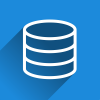Related Content
 |
Choosing a Data Processing Framework With an assortment of open source data processing frameworks available, it may become a developer’s quandary as to which is the most suitable. More often than not, multiple frameworks are used in the same application. |
|
 |
New Language Features in Java 17 As Java 17 is the latest Long Term Support (LTS) version after Java 11, it is opportune to go over the new language features it adds, some of which had been Preview features in intermediate versions. |
|
 |
Why Use the MySQL Cluster Database If you need to provide a distributed database that serves several (millions) users, and has a high volume data load, the MySQL Cluster database is the database to use. |
|
 |
The Rise of Security Challenges for the Data Cloud Data is getting dispersed across numerous databases, microservices, analytics tools, and pipelines. This results in increased security concerns that will soon become “top-of-mind” for engineering and security teams alike. |
|
 |
Groovy - Agile Java Groovy's recent surge in usage (TIOBE index ranking from 26 to 12 between Feb. 2020 and Feb. 2021) could be attributed to the many benefits the language provides. Groovy, like Java, is compiled to JVM (Java Virtual Machine) bytecode. |
|
 |
Sealed Classes in Java 17 Sealed classes are classes that permit only specific classes to extend them, as a result limiting extensibility. Sealed classes provide several benefits such as: additional modularization, could be used to develop internal classes, could be used to develop proprietary software. |
|
 |
New JVM Features in JDK 11 Java SE 11 is a recent LTS (Long Term Support) version of Java. Java 11 has introduced several other (non-language features), some of which we’ll discuss in this article. |
|
 |
Cutting Cloud Costs with Spot Instances on AWS and Azure Short-term spot instances can save users up to 90 percent compared to regular on-demand instances. How do you know if they are right for you? |



